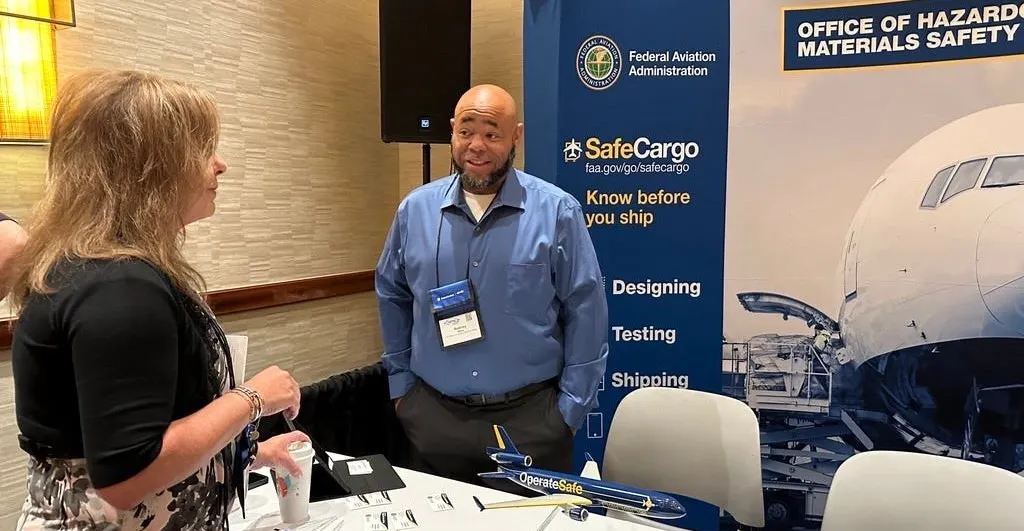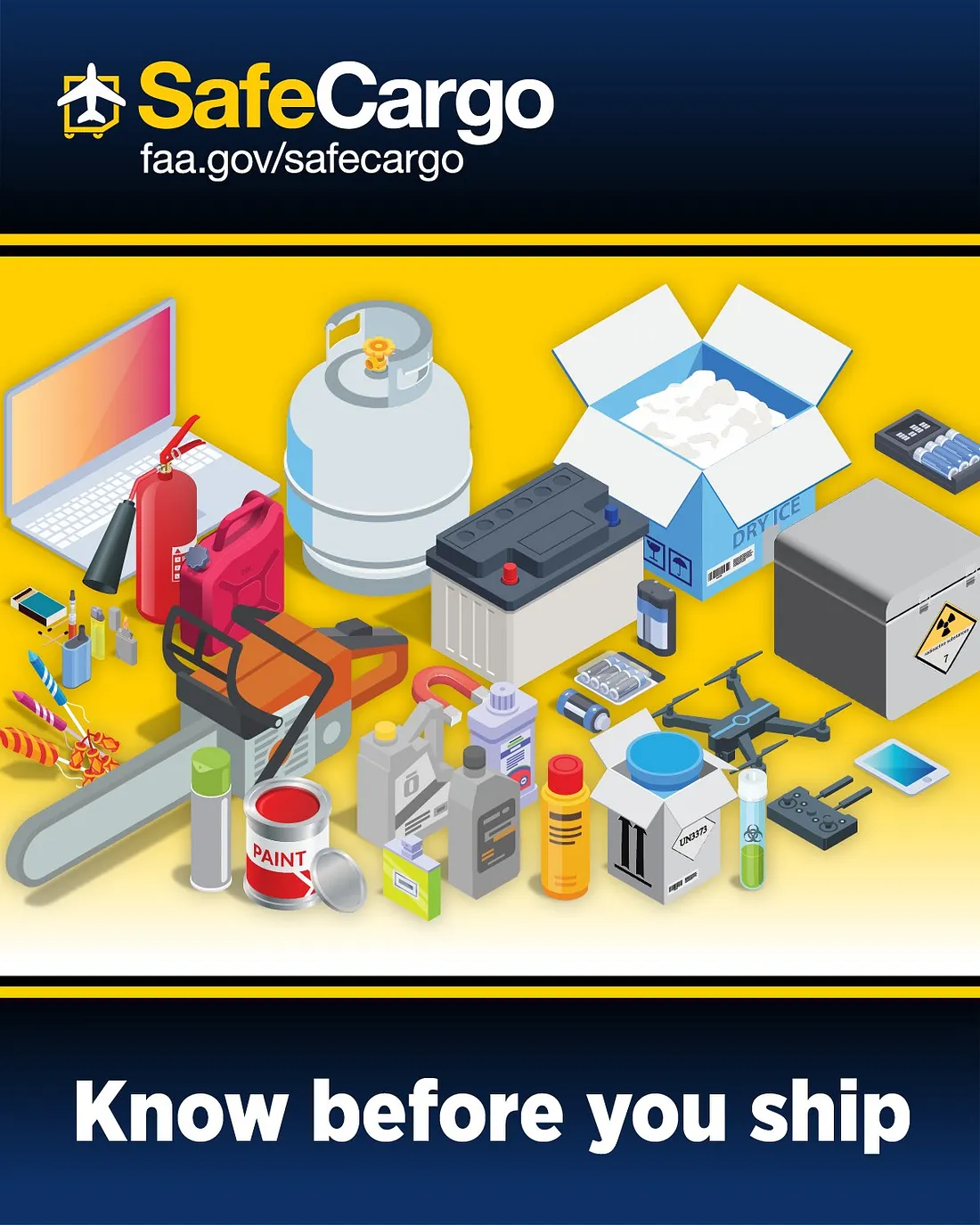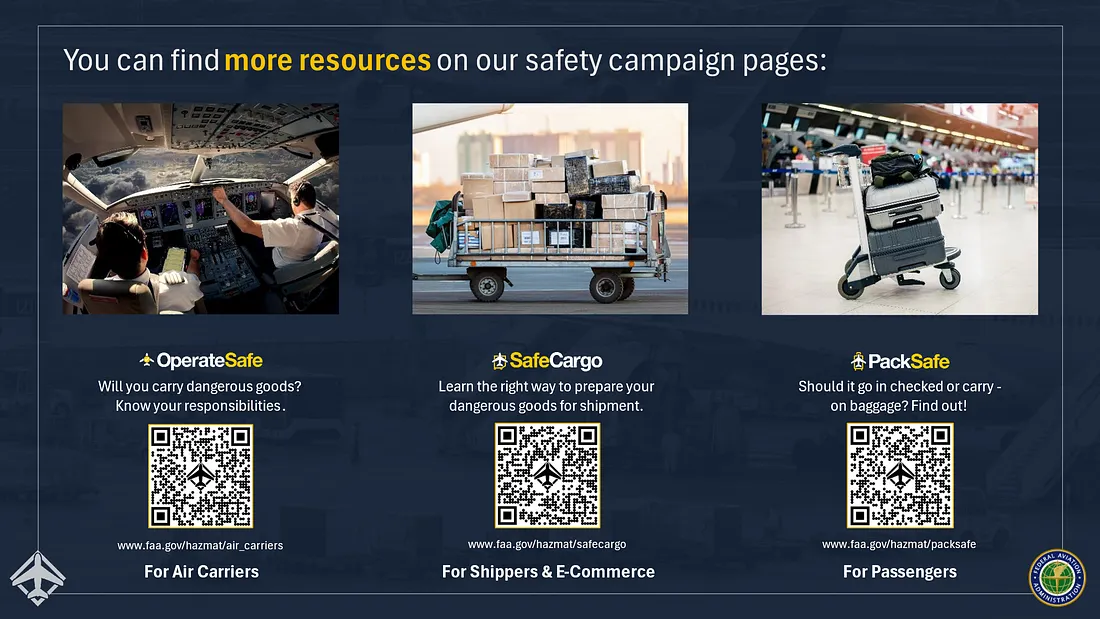On the Case: Preventing Lithium Battery Hazards
Cell phones. Laptops. Tablets. E-Cigarettes. And now even robotic suitcases that follow people around airports. Electronic devices are all around us.
Despite their practical attributes, these components of modern living can pose significant risk to aviation safety if their lithium-ion batteries overheat resulting in heavy smoke, and in some cases, fire. Through June 30 of this year, the FAA has verified 38 lithium battery incidents involving smoke, fire or extreme heat on passenger and cargo aircraft, and a record 89 incidents occurred last year.
That’s why inspectors like Rodney Myles are constantly on the alert.
“Our guiding principle every day is to ensure hazardous materials shipments are safe,” said Myles, a Principal Hazardous Materials Aviation Safety Inspector with the FAA’s Office of Security and Hazardous Materials Safety. “We know that our work has a direct effect on the safety of the traveling public, and we take that responsibility very seriously.”

The top goal for Myles and his roughly 100 fellow inspectors is to prevent incidents from occurring. They work directly with cargo shipping companies to ensure that hazardous materials, amounting to 261,000 tons per year, are shipped safely.
During inspections at cargo facilities, “We try to inspect every cargo shipping company’s acceptance of hazardous materials prior to air transportation,” said Myles, adding that he appreciates the extent to which cargo carriers use their own x-ray machines and even K-9s to detect hazardous materials.
Inspectors also work with airlines to ensure they follow proper procedures in handling potentially hazardous materials and make certain passengers safely store items with lithium-ion batteries either in overhead bins or within arms-length. If an incident occurs, inspectors launch an investigation by contacting individuals with key information. “In some cases, we go on site to talk to the flight attendants and the crew as well as passengers about what happened,” says Myles, who has 33 years of hazardous materials experience with the Navy, Air Force and for the past 11 years the FAA.
The inspectors also reach out to companies that ship products. Major cargo companies like FedEx and UPS work with large shippers who are well versed in the rules for shipping hazardous materials, but smaller shippers might not be.
“A lot of times you will find with a small company that they are not properly trained,” Myles said. “They do not know what they’re shipping. And we will try to educate them.”
If a company intentionally withholds information from a cargo carrier about the contents they are shipping, the FAA will open up an enforcement action that could lead to severe civil penalties. When investigating individual companies, Myles takes a close look at whether they provide proper training and post hazmat signage.
“All inspections and enforcement actions that we conduct are challenging” he said, “but it is very important to determine what went wrong and how it can be corrected so it won’t happen again.”

And, to keep abreast of emerging technologies, Myles goes out to consumer electronics shows to take notes on new products that might pose a threat to aviation safety.
Myles said the most satisfying part of his job “is the critical role we play in aviation safety. We talk, educate, and let entities know there are tools the FAA provides to help them better understand the requirements for shipping hazardous materials by air, and with the flying public, about the dangers of hazardous materials and lithium-ion batteries carried by a passenger onto an airplane.”
Safety Resources

